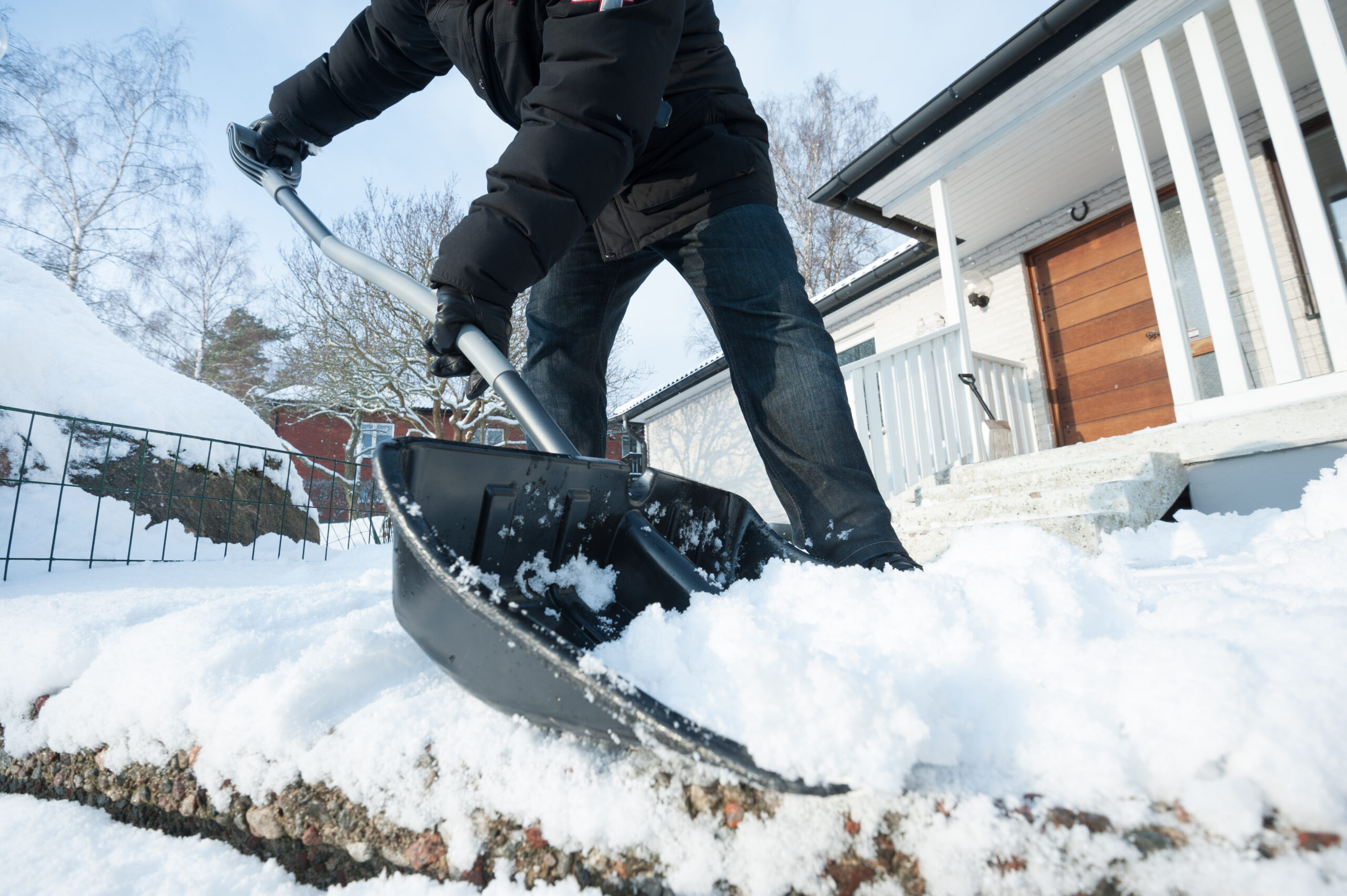As winter blankets our communities in a serene layer of snow, the picturesque scenes often come with that old seasonal responsibility – shoveling snow.
While it’s a necessary chore, it’s crucial to approach shoveling cautiously, keeping our health in mind. Moreover, it’s essential to recognize the warning signs that may indicate you’re pushing yourself too hard, potentially putting yourself at risk of a heart attack.
Stretch it Out
Before you step out into the winter wonderland, take a few minutes to warm up your body. Perform gentle stretches to prepare your muscles for the task ahead. Take time to stretch your legs, arms, and neck. This can help reduce the risk of strains and injuries to your back and legs.
Choose the Right Shovel
 Invest in an ergonomic shovel that suits your height and strength. A shovel with a curved handle can help reduce the amount of bending over, lessening the strain and weight on your back. Also, be sure to choose a shovel with a lightweight blade to minimize the weight you’ll be lifting with each scoop.
Invest in an ergonomic shovel that suits your height and strength. A shovel with a curved handle can help reduce the amount of bending over, lessening the strain and weight on your back. Also, be sure to choose a shovel with a lightweight blade to minimize the weight you’ll be lifting with each scoop.
Lift with Your Legs, Not Your Back
When lifting snow, bend your knees and lift with your legs instead of your back. Engage your core muscles to provide stability and support to your spine. Avoid twisting your torso while lifting, as this can strain your back muscles.
Take Breaks
Shoveling snow is a strenuous activity, and it’s essential to pace yourself. Take breaks every 15-20 minutes to rest and rehydrate. Overexertion can lead to fatigue and increase the risk of injuries.
Stay Hydrated
Even in cold weather, it’s essential to stay hydrated. Dehydration can strain your heart and increase the risk of cardiovascular events. Likewise, dehydration can cause muscle cramps, and no one wants those. Drink water regularly, even if you don’t feel thirsty.
Dress in Layers
 Protect yourself from the cold by dressing in layers. This not only keeps you warm but also allows you to regulate your body temperature as you exert yourself.
Protect yourself from the cold by dressing in layers. This not only keeps you warm but also allows you to regulate your body temperature as you exert yourself.
Listen to Your Body
Pay attention to your body’s signals. Stop shoveling immediately if you experience any pain, especially in your chest, arms, or neck. These could be warning signs of a heart attack. It’s better to be safe and seek medical attention than to push through the pain.
Warning Signs of Overdoing It
- Chest pain or discomfort
- Shortness of breath
- Excessive fatigue
- Dizziness or lightheadedness
- Nausea or vomiting
Shoveling snow can be a great workout, but only when doing it correctly. By taking the necessary precautions, listening to your body, and recognizing warning signs, you can enjoy the winter wonderland while safeguarding your health. Remember, shoveling safely and steadily is better than rushing and risking injury or strain on your heart… or better yet, get a snowblower! Stay warm, stay safe!
The help you need
Riverside has expert providers and top technology to care for a wide range of Heart or Bone and Joint conditions. Find out more about the services available on our website.